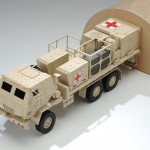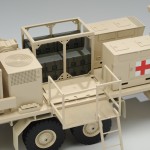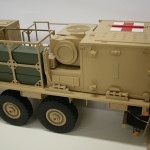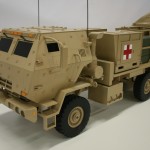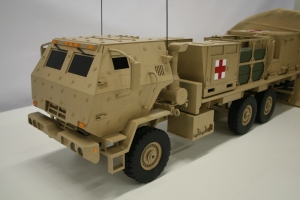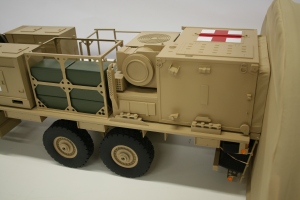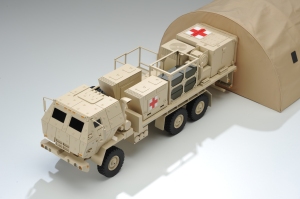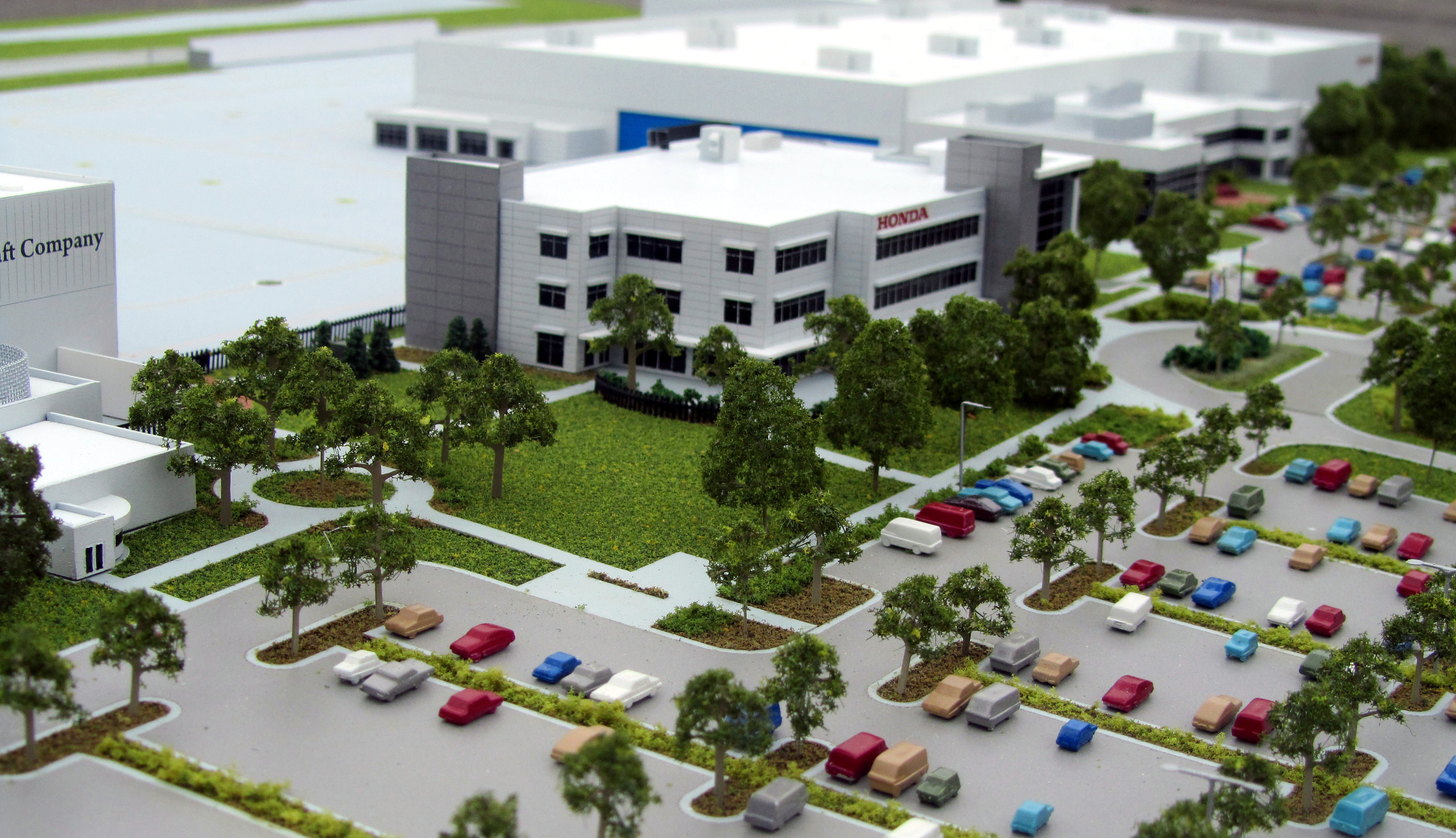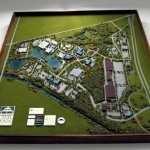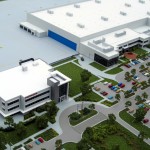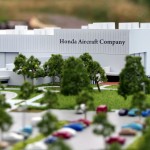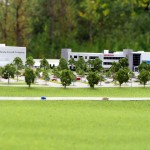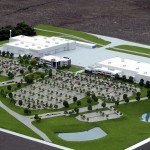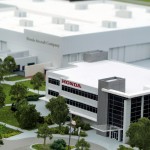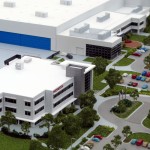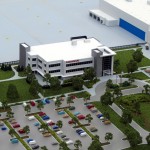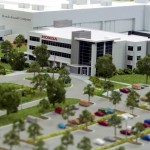Nearly two years ago, KiwiMill built a model of a five ton FMTV armored cab truck model with a specialized medical hospital payload. The model was 1/10th scale with the truck about 36″ long. It was completely hand-built for trade show use, with a brass frame and numerous brass details. The cab had separately applied bolt head and hinge details on laser etched acrylic armor panels.
Recently the model shop was asked to make a second FMTV truck, in 1/20th scale. Having acquired a 3D printer during the interim, KiwiMill approached the build somewhat differently the second time around. Many detailed parts that were built by hand originally, were drawn on the computer and made with the Objet 3D printer, precisely and quickly. Soldered brass was still used for strength and longevity. The fabric tent design was altered a bit as well.
There is no one right way to make a scale model. Approaches vary depending on the materials and fabrication methods available, as well as the particular preferences of the model maker. Specific client requests may factor in, and of course, budget and time constraints. Skilled model makers adapt and adjust to new technology, continuously honing and improving on their techniques.
Something that doesn’t change in the profession: the purpose of the scale model will always drive the fabrication method and materials used, while the quality of the finished product will determine if the chosen methods were successful.


